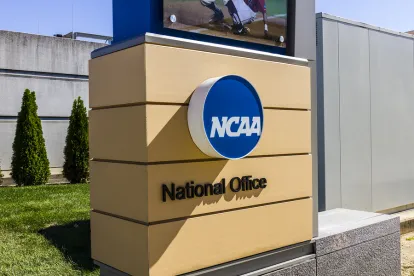In a much-anticipated move, the NCAA Division I Council has approved a rule change to modify current transfer rules and unify all student-athletes under the same transfer rules. The change will allow student-athletes in five sports (football, men’s and women’s basketball, baseball, and men’s hockey) to join other Division I student-athletes. It also will authorize athletes in these five sports to transfer once during their five-year window of athletic eligibility without having to sit out a year before being able to resume their athletic careers.
The new transfer rule will modify an antiquated rule from the 1960s, which restricted student-athlete transfer, and allow immediate athletic participation for transferring student-athletes. It is anticipated the formal rule will be approved by the NCAA Board of Directors on April 28th and require athletes who participate in fall and winter sports to notify their current school of their intention to transfer by May 1st and spring sport athletes will be required to provide transfer notification by July 1st. These formal notification dates will begin in 2022. As a result of the transfer rule change occurring after the May 1st notification deadline,
athletes in all sports will be permitted to provide notification of their intent to transfer by July 1st for the current year.
The existing NCAA transfer rule in Bylaw 14.5.1, Residence Requirement-General Principle, states, “a student who transfers to a member institution from any collegiate institution is required to complete one full academic year of residence at the certifying institution before being eligible to compete for or to receive travel expenses from the member institution.” The only exception to this rule permitted a student-athlete to appeal to the NCAA for a specific eligibility waiver to allow immediate eligibility.
The NCAA’s modification to the transfer rule had been anticipated to take place in January, along with the introduction of name, image, and likeness rule modifications. The rule changes had been foreshadowed by the NCAA for several months, but were not finalized after the Justice Department’s antitrust division leader Makan Delrahim informed the NCAA and NCAA President Mark Emmert and expressed concern about potential antitrust law implications involving unnecessary anticompetitive barriers in any proposed NCAA legislation and rule modifications to transfer rules and name, image, and likeness rights.
Anticipating the transfer rule change, active student-athletes increasingly are seeking transfers. In football and men’s basketball combined, nearly 3,000 players are active in the transfer portal, including nearly 1,200 in men’s basketball alone. This significant increase in potential transfers has resulted in strong responses from coaches and collegiate athletic commentators. According to Jon Steinbrecher, Commissioner of the Mid-American Conference, “This concept provides a uniform approach that is understandable, predictable and objective. Most importantly, it benefits students.”
Todd Berry, executive director of the American Football Coaches Association, presented a different viewpoint, raising concerns about the transfer rule changes, “We don’t want to lower graduation rates, we don’t want recruiting off other campuses …. history tells us what is going to happen. You’re basically going to recruit off other campuses.”





 />i
/>i
